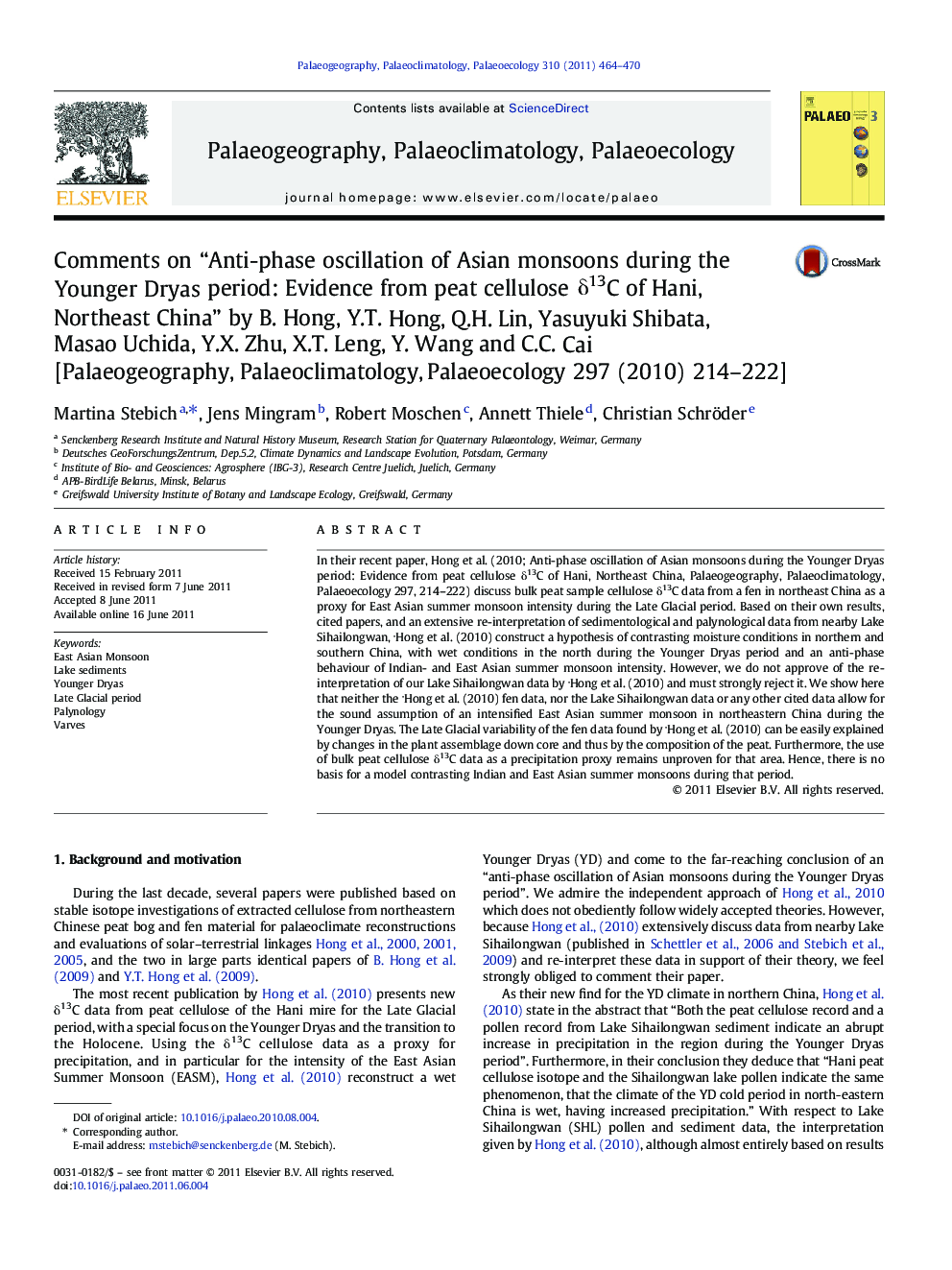| Article ID | Journal | Published Year | Pages | File Type |
|---|---|---|---|---|
| 4467117 | Palaeogeography, Palaeoclimatology, Palaeoecology | 2011 | 7 Pages |
Abstract
In their recent paper, Hong et al. (2010; Anti-phase oscillation of Asian monsoons during the Younger Dryas period: Evidence from peat cellulose δ13C of Hani, Northeast China, Palaeogeography, Palaeoclimatology, Palaeoecology 297, 214-222) discuss bulk peat sample cellulose δ13C data from a fen in northeast China as a proxy for East Asian summer monsoon intensity during the Late Glacial period. Based on their own results, cited papers, and an extensive re-interpretation of sedimentological and palynological data from nearby Lake Sihailongwan, Hong et al. (2010) construct a hypothesis of contrasting moisture conditions in northern and southern China, with wet conditions in the north during the Younger Dryas period and an anti-phase behaviour of Indian- and East Asian summer monsoon intensity. However, we do not approve of the re-interpretation of our Lake Sihailongwan data by Hong et al. (2010) and must strongly reject it. We show here that neither the Hong et al. (2010) fen data, nor the Lake Sihailongwan data or any other cited data allow for the sound assumption of an intensified East Asian summer monsoon in northeastern China during the Younger Dryas. The Late Glacial variability of the fen data found by Hong et al. (2010) can be easily explained by changes in the plant assemblage down core and thus by the composition of the peat. Furthermore, the use of bulk peat cellulose δ13C data as a precipitation proxy remains unproven for that area. Hence, there is no basis for a model contrasting Indian and East Asian summer monsoons during that period.
Related Topics
Physical Sciences and Engineering
Earth and Planetary Sciences
Earth-Surface Processes
Authors
Martina Stebich, Jens Mingram, Robert Moschen, Annett Thiele, Christian Schröder,
